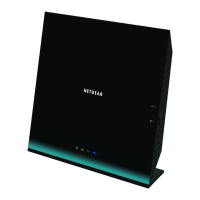
Do you have a question about the NETGEAR R6100 and is the answer not in the manual?
| Ethernet LAN | Yes |
|---|---|
| Cabling technology | 10/100Base-T(X) |
| Networking standards | IEEE 802.11a, IEEE 802.11ac, IEEE 802.11b, IEEE 802.11g, IEEE 802.11n |
| Ethernet LAN data rates | 10, 100 Mbit/s |
| Ethernet LAN interface type | Fast Ethernet |
| Wi-Fi band | Dual-band (2.4 GHz / 5 GHz) |
| Wi-Fi standards | 802.11a, Wi-Fi 5 (802.11ac), 802.11b, 802.11g, Wi-Fi 4 (802.11n) |
| Top Wi-Fi standard | Wi-Fi 5 (802.11ac) |
| WLAN data transfer rate (max) | 867 Mbit/s |
| USB version | 2.0 |
| Rack mounting | - |
| xDSL connection | No |
| Bandwidth (first) | 2.4 GHz |
| Bandwidth (second) | 5 GHz |
| USB ports quantity | 1 |
| WLAN data transfer rates supported | 300, 867 Mbit/s |
| Ethernet LAN (RJ-45) ports | 5 |
| Security algorithms | WEP, WPA, WPA2-PSK |
| Flash memory | 128 MB |
| Cables included | LAN (RJ-45) |
| Depth | 60 mm |
|---|---|
| Width | 180 mm |
| Height | 170 mm |
| Weight | 322 g |
Open the box and remove the router, cables, and installation guide.
Description of LEDs and buttons on the router's front and side panels.
Step-by-step guide to setting up the router using the NETGEAR genie software.
Configure the router's internet connection and ISP settings.
Use the wizard to automatically detect and configure the internet connection.
Check for and install new firmware to update the router's software.
Update the router's administrative login password for enhanced security.
Diagnose router issues by interpreting the status of front panel LEDs.
Troubleshoot inability to access the internet despite router connectivity.
Resolve issues related to connecting devices wirelessly to the router.